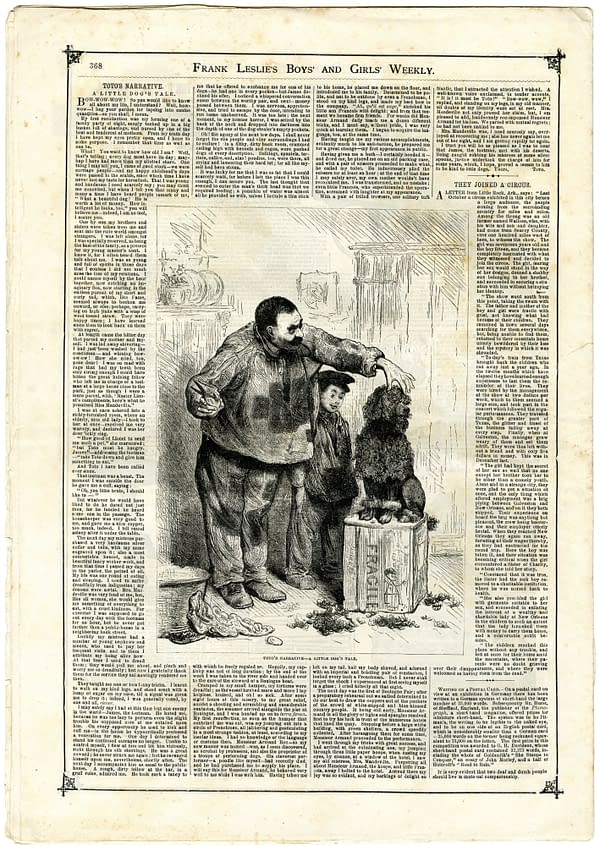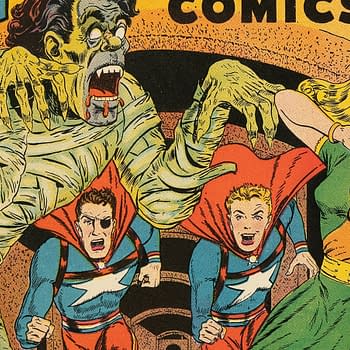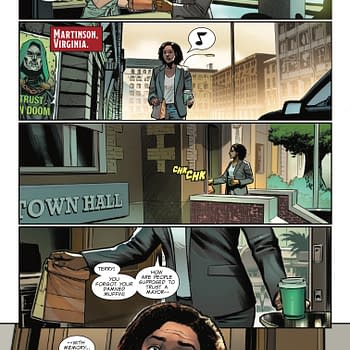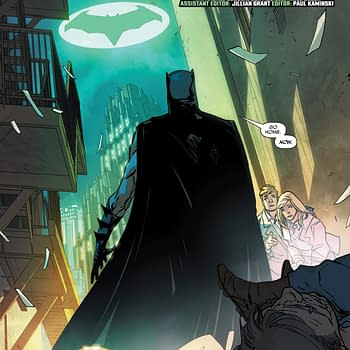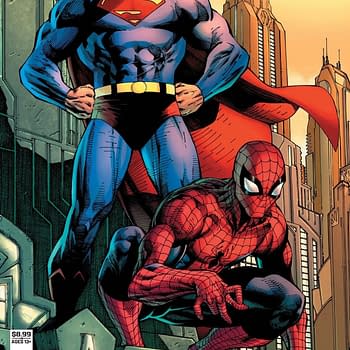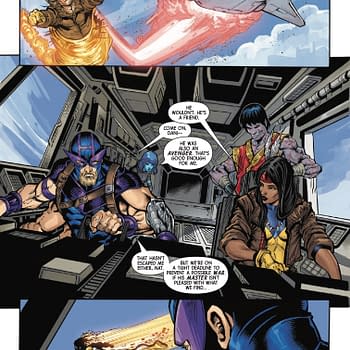Posted in: Comics, Vintage Paper | Tagged: l. frank baum, steam man, the issue, wizard of oz
Did L. Frank Baum's Wizard of Oz Borrow Toto from Another Story?
Frank Leslie's Boys and Girls Weekly #795, Jan 14, 1882, features Toto on the back cover, nearly 18 years before L. Frank Baum wrote The Wonderful Wizard of Oz. This story cuts across all sorts of history that interests me, and I have to say that when I started looking into this matter shortly after I acquired the issue, I began to wonder whether the accepted versions of the history behind Wizard of Oz are impossibly wrong.
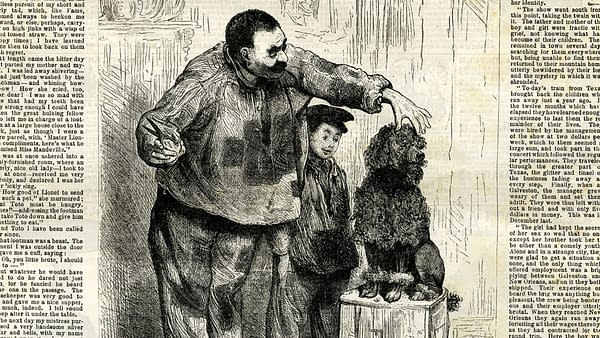
The Issue is a regular column about vintage comics and other vintage periodicals from throughout world history. The idea behind The Issue is simple: for each post, I'll choose something from my collection and talk about what's going on in it, and discuss the publishers and creators behind it. And essentially, I'm just going to end up stepping through comics history one issue at a time. There is only one rule in The Issue: No recent stuff. Everything will be from before 1940, and most of it will be from before 1920.
Yellow Bricks, Yellowstone
Among other sources of inspiration, I'm thoroughly convinced that the symbolism of Oz borrows heavily from Steam Man of the Prairies, which starts near that now-famous symbolic gateway to the drama and rewards of the American West, St. Louis, and eventually includes a fateful journey down a Yellow-named pathway.
Yellow Brick Road = Yellowstone River.
If you map those two things, the rest of it drops into place. When you're in Kansas, follow along the path of the Missouri River, then take the branch off onto the Yellowstone River. There was a time when such a path took hopeful travelers over the rainbow, and on a journey towards what they hoped would be a literal pot of gold at the end. That path makes its way towards the region of the Black Hills in Dakota, a territory where some of the largest gold and silver strikes in U.S. history were found.
But travelers making such a journey west might have some difficulties on the frontier along the way. This isn't Kansas anymore, after all, and the native people they encountered along the way obviously didn't agree that such Westward journeys were a matter of Manifest Destiny. And even beyond that, such travelers were in for many hardships. You might make your way over that rainbow, become disappointed that you didn't strike it rich because you didn't get there earlier, quickly decide there's no place like home — and head back East again.
If you've ever watched David Milch's Deadwood, one of the themes of the series is about that notion, particularly as embodied in the storylines surrounding the young girl Sophia.
Toto, the Dog Star
Wizard of Oz histories sometimes say that Toto was a popular dog name of that era, but I see no evidence of that. And even if it was, as the owner of a midwestern farm that's been in my family since before Baum wrote his tale, I'd note that farm dogs were typically large enough to help you hunt and keep predators from killing your chickens. Toto is not a 19th Century Midwestern farm big-dog name, I wouldn't think, though that's obviously subjective. It has also been theorized that Toto "was likely a reference to prohibitionists (that is, 'teetotalers')", but according to my own research, this too is unlikely.
A far as I can tell, Toto as a dog name comes to us from Latin phrases regarding Sirius, the Dog Star, and one in particular that went like this:
Dum calidus toto Sirius ore latrat.
This is essentially an allusion to the dog days of summer — and that sometimes things can happen that startle dogs during those hot, dog days. Like perhaps a tornado for example, particularly in Kansas.
Beyond that, research reveals a more specific "origin moment" for Toto as a dog name in the 19th century. According to news stories of 1867, there was a "white poodle, of the purest breed, belonging to a Parisian cafe-keeper." This dog's name was Toto, and it was cute and became very famous, for random reasons that cute animals sometimes become famous to this day. Pretty soon after that, people were writing fiction about dogs named Toto.
This Frank Leslie's Boys and Girls Weekly #795 story from 1882 that I've shown here is not the first of those, but it is by far the most interesting that I've seen, in connection to Oz. In this story, Toto can talk, but not to humans, just yet. It's similar in the Oz books, as Toto finally reveals he can talk in Tik-Tok of Oz. Toto is brought to his new home by a loyal servant named Lionel. He is befriended and cared for by a man in patchwork clothing, not unlike the clothes worn by a scarecrow. There's a reference to a "young master" that we don't meet in this story, but we do meet that young person's aunt: Aunt Mandeville. Maybe we'll call her Auntie M for now. Or Auntie Em.
Toto is stolen and sent to a dog circus. He meets "Bulldogs, spaniels, terriers, collies, and alas! poodles too, were there" (Oh, my).
Spoiler alert: Toto is found by Auntie M, and returned home. The end. This is a circus-themed issue, but this story doesn't connect to the others in #795. I don't know if Baum read this particular Toto story, but it's hard not to wonder whether he read something like it.
